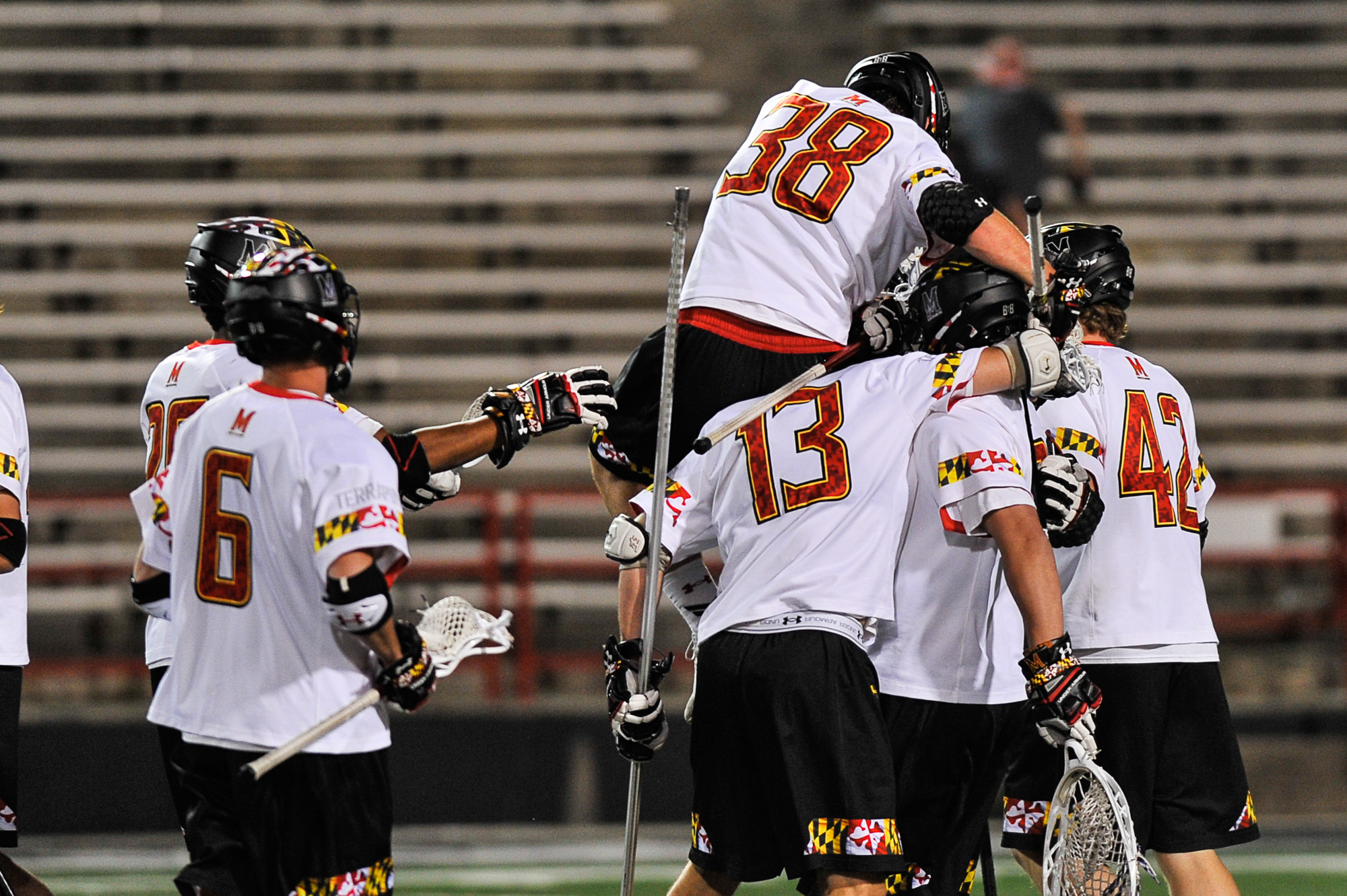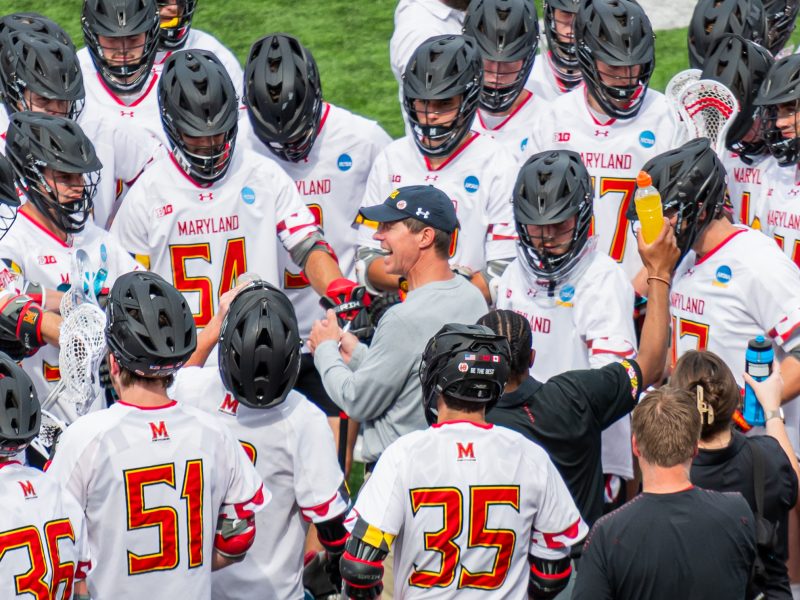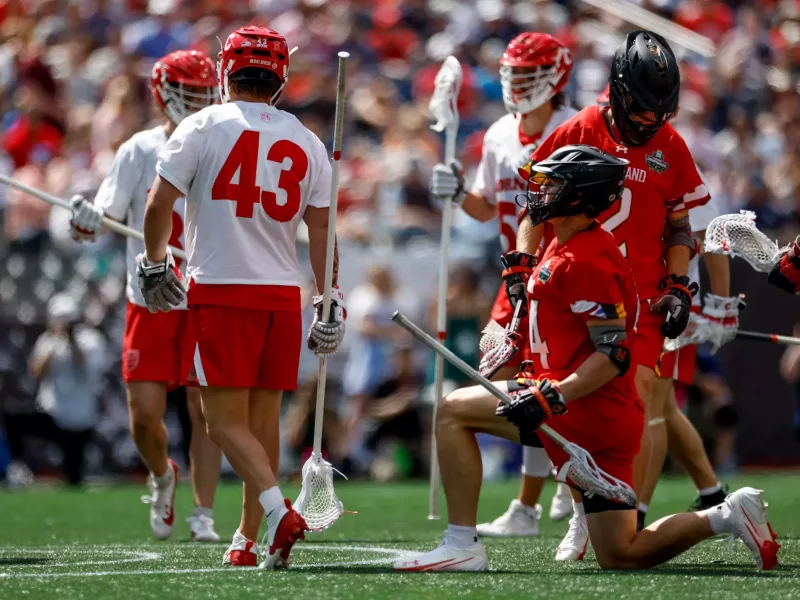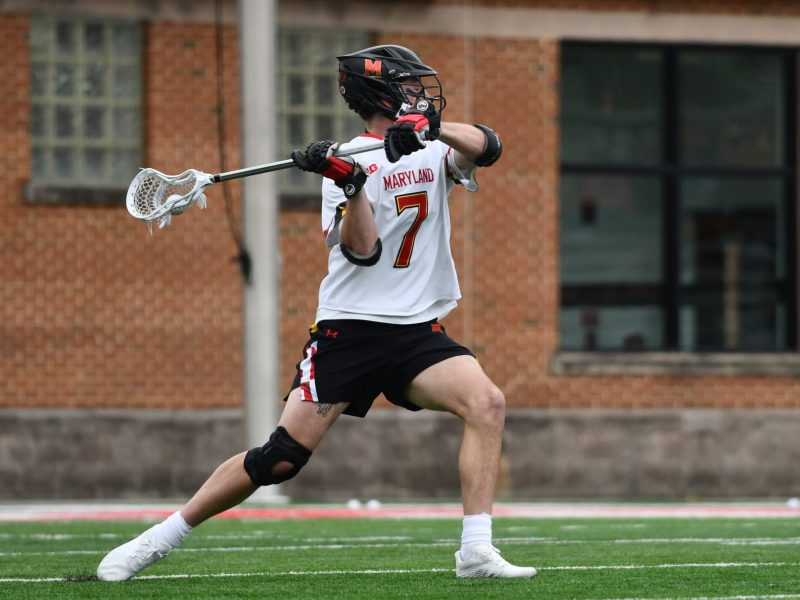Maryland men’s lacrosse coach John Tillman had grown weary of his team’s tendency to fall behind early in games.
In each of the Terps’ three games prior to downing Navy on Tuesday night, the Terps had trailed at halftime. Against Penn State on April 10, the team fell into a four-goal deficit midway through the second quarter.
“You’re not always going to play from the front — we get that,” Tillman said after prevailing in all three bouts. “I just got concerned that we kept digging ourselves holes.”
In their clash with Navy though, the No. 5 Terps’ trend of early-game drama disappeared as they led for the final 49 minutes and 36 seconds. Tillman hopes that consistent approach continues Sunday night when his team battles Ohio State for a chance to clinch at least a share of the Big Ten regular-season title at Maryland Stadium.
“A lot of it is having guys that — in that moment — are calm, cool and collected; having some big experience helps you,” Tillman said. “But again, sometimes it boils down to a little bit of luck.”
While Tillman wouldn’t say the Terps’ 10-5 thrashing against the No. 7 Midshipmen was their best showing this year, he saw promising signs as the postseason approaches.
The defense matched its season low in goals allowed as the unit forced the Midshipmen into scoring droughts of about 21 minutes, 17 minutes and 10 minutes throughout the night.
In the top-10 matchup, defender Greg Danseglio said the backline took a “level-headed” approach. After each of goalkeeper Kyle Bernlohr’s five saves, they didn’t celebrate, instead looking to clear upfield to give the offensive players a chance to “cash in.”
“We try not to play with the highs and the lows,” Danseglio said. “We look at it as ‘get the next one.'”
That’s the same approach the Terps took at the faceoff X.
With faceoff specialist Austin Henningsen sidelined for a second straight game with a leg injury — “I candidly thought he would be back by now,” Tillman said in a conference call Thursday morning — midfielder Will Bonaparte again handled the starting duties at the X.
While Navy won the faceoff battle, 11-8, Bonaparte’s effort in the center, along with Danseglio and midfielder Isaiah Davis-Allen’s contributions on the wings, helped the Terps control the tempo and push Navy into their scoreless stretches. After the game, Tillman called Bonaparte’s outing “one of the best 8-for-19 performances I’ve seen.”
“Sometimes if he lost the faceoff, it didn’t seem that way because he’s fighting for ground balls and doing everything he can,” midfielder Colin Heacock said. “That kind of gave everybody that extra energy boost.”
Before the game, Tillman didn’t know what to expect from his team. The Terps were playing on a short week after the emotional high of Senior Day and having to “fight like crazy to try to get that W” against Rutgers. After Saturday’s match, the team lingered for the evening to celebrate the veterans and their families.
In the days leading into Senior Day, the Terps endured some issues, too. The team returned from its overtime triumph against the Nittany Lions around 2:30 a.m. Monday morning. Players still had to go to class, while Tillman, admitting with a smirk, muddled through a budget meeting. In the next few days, a handful of the Terps got sick, with some missing practices.
So Tillman was pleased to see his Terps rally through those events to extend their winning streak to nine games, clinching their NCAA-best 14th consecutive 10-win season.
And he knows they don’t have a chance to settle down yet.
In the Terps’ regular-season clash with the Buckeyes in 2015, they needed four unanswered goals in the final five minutes for the opportunity to clinch their overtime victory in Columbus. Ohio State, though, exacted revenge in the Big Ten semifinals in College Park.
After persevering through a string of tight games, they don’t want to blow the opportunity to clinch part of the conference’s regular-season trophy.
“It’s toward the end of the year,” Tillman said. “We really need to start playing a complete 60 minutes.”



